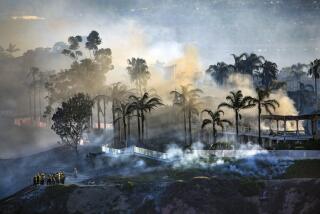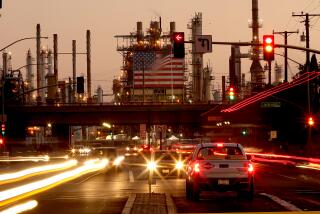SCE Fined for Safety Errors at San Onofre
The U.S. Nuclear Regulatory Commission has proposed that Southern California Edison Co. pay a $150,000 civil penalty for two separate malfunctions in the standby safety systems of the San Onofre nuclear generating station, Edison officials reported Friday.
Neither malfunction posed a hazard to plant employees or the public, according to David M. Barron, an Edison spokesman. But Barron said the utility company considers the misalignments to be “serious” departures from the plant’s good operating record.
“We don’t intend to contest the notice of violation or the proposed fine,” Barron said, adding that corrective measures, including changes in plant procedures to preclude future recurrence, are already in place.
A statement released by the NRC on Friday credited the utility with immediate and long-term corrective actions and lauded its “self-critical” and “aggressive” response to the mishaps. But still, the NRC charged the utility more than the base penalty of $50,000 per infraction “because of the duration of the violations.”
The first occurred Aug. 27, 1990, when a water drain valve on a steam supply pipe to a standby feedwater pump on Unit 2 was inadvertently left closed because of an error in an operating procedure. The drain valve remained closed until Oct. 21, when the problem was discovered during an unrelated investigation.
In the NRC’s Notice of Violation received by Edison Friday, that malfunction was said to have resulted in part from “poor and informal communication” between two divisions of Edison staff and from insufficient operator awareness of plant conditions.
The second violation occurred Sept. 24, 1990, when an automatic valve in one of the two, redundant reactor emergency cooling systems at Unit 3 was inadvertently opened as a result of work on electronic equipment. The valve remained open for 95 hours--over 12 employee shift changes--before the problem was identified and corrected.
In this case, malfunction reduced the reliability of the emergency cooling and containment systems, Barron said. The other cooling system remained available to provide emergency reactor cooling if it had been required, he said.
More to Read
Inside the business of entertainment
The Wide Shot brings you news, analysis and insights on everything from streaming wars to production — and what it all means for the future.
You may occasionally receive promotional content from the Los Angeles Times.










